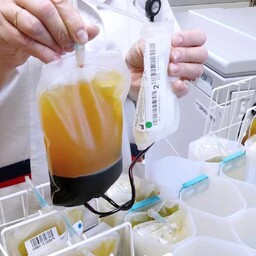Blood centers always need new donors. However, many Estonians cannot donate blood because they have low hemoglobin levels. The cause is often iron deficiency.
25–30% of blood donors are sent back because their hemoglobin level is too low. This was stated by Helve König, Chief Physician of the Blood Center of Tartu University Clinic. The causes of iron deficiency are often poor nutrition or blood loss. This is mostly a problem for women.
Some people do not absorb iron as they should. For example, during pregnancy or breastfeeding. Some develop iron deficiency more easily than others. The reasons are not always clear.
Some people struggle constantly. They complete iron courses, take a long break from donating, and then their hemoglobin drops again. Some men can donate blood five times a year without problems. Women develop anemia more easily.
According to König, the number of people with iron deficiency has not increased significantly. However, vegetarianism is popular today. If one does not know how to eat varied, problems may arise. Eating meat is now considered bad. However, some nutrients are best obtained from animal protein.
Some eat meat and fish, but hemoglobin is still low. The issue may not only be in diet. Women may have heavy menstrual periods. All these factors affect blood.
Blood donors are advised to use iron supplements. If hemoglobin is low but they wish to donate blood, they can take iron tablets. After donating blood, they can take iron tablets for 2–3 months. Food cannot replace iron.
Ave Lellep, Head of the Blood Center of North Estonia Regional Hospital, said that donors are expected to have higher hemoglobin levels. Women must have at least 125 g/l, and men 135 g/l. If a woman has 123–124 g/l, it is not yet pathological.
Blood donors are expected to have higher hemoglobin levels for two reasons. First, blood donation must not harm the donor. Second, blood products must contain sufficient hemoglobin.
Last year, approximately 30,000 people came to the regional hospital's blood center. 4,200 of them could not donate blood. One third of them had low hemoglobin levels as the reason.
The most common cause of iron deficiency is bleeding. This primarily affects women of childbearing age. The blood donation interval for women is 90 days, for men 60 days. Donating blood during menstruation is not recommended.
Nutrition is also important. The greatest sources of iron are red meat and liver, as well as legumes, soybeans, and lentils. Coffee, smoking, and alcohol hinder iron absorption.
Estonians eat more protein today than before. However, it is not certain whether they also eat more meat. Over the last 20–30 years, the diet of Estonians has changed significantly. It seems that we are moving towards a diet with less meat.
Ave Lellep recommends coming to donate blood having eaten. Before coming, one could eat fiber-rich food. After donating blood, one should eat meat and iron-rich foods. Vitamin C helps with iron absorption. It is possible to take iron supplements, but one should not overdo it.

